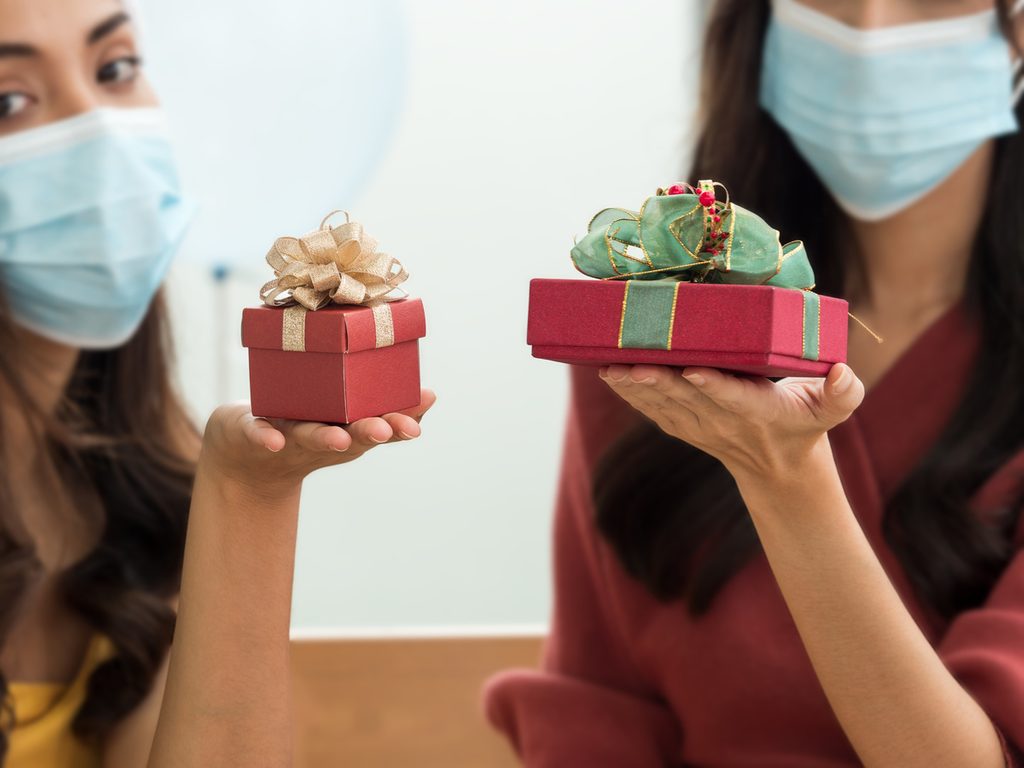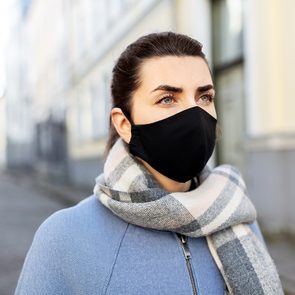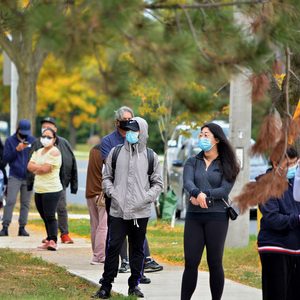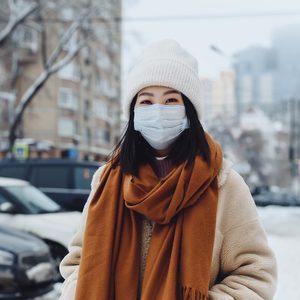How Can I Celebrate The Holidays Safely During COVID-19?

As Canada enters a second wave of COVID-19, health authorities suggest exercising restraint during the holidays. Infectious disease specialist Dr. Isaac Bogoch explains why, and what you can still do to celebrate the season.
Reader’s Digest Canada: Can people safely gather to celebrate the holidays this year?
Infectious disease specialist Dr. Isaac Bogoch: I love the approach of “how can we do this safely,” and I still think that’s the right lens to view many aspects of the pandemic. But when it comes to the upcoming holiday season, we have to be very careful about getting together with family and friends, because the rates of COVID-19 are so high across many parts of the country. As we’ve seen before, there’s going to be different rules in different jurisdictions about how many people can gather together. But we should really only be getting together with people who live under the same roof—and not have other people come into the home. I think we’ll start to see more messaging around that as the holidays get closer.
Did Thanksgiving in Canada teach us anything?
Yes. There’s been a pretty impressive rise in cases since then, and some of that is very likely to be attributed to activity around Thanksgiving. Certainly Christmas, Hanukkah, New Years and other holiday gatherings have the potential to amplify COVID-19 in many communities across the country.
If we don’t do big family gatherings this year, what’s going to be the payoff?
At the individual and family level, you really ensure that you have a safer holiday season and don’t put people in your family at risk, especially those who might be at risk of having a severe infection—like elderly parents or grandparents, or people who have underlying medical conditions. At a community level, you’re helping to prevent the amplification of this infection.
Imagine one household where COVID-19 ends up being transmitted among several people—and then they have friends or family over. Now magnifying that across the 38 million people in Canada… That has the potential to significantly spread this infection.
Some people are talking about taking their kids out of school, spending a couple of weeks being extra careful and then getting together with grandparents for holiday celebrations. Does that sound reasonable to you?
I have a couple of thoughts about that. For one, people don’t always recognize the number of contacts that they actually have in a day—while going out, getting groceries and going about their day. We actually have a pretty significant amount of contacts per day, as much as we’d like to think we don’t. However, if you can truly quarantine for 14 days—and really, truly not have any interactions with other people for that time period—then yes, from a medical and scientific standpoint, you wouldn’t pose any risk to other people. You might not be adhering to the local rules, but you won’t pose a risk.
Is there any other way to get that sense of togetherness this year?
We can find creative ways to connect with those we love through other channels, like phone calls and virtual get-togethers. As always, outdoor environments are much safer than indoor environments. It’s unclear what policies will be in place around outdoor gatherings when the holiday season rolls around, but if it’s allowed, I think it’s wonderful for people to get together for walks in the park. If you’re practicing appropriate physical distancing measures and wearing a mask, you certainly can have some social engagement with friends and family in smaller groups outside.
Can you update me on what we know about outdoor transmission?
It’s not impossible to get infected in outdoor environments but it seems to be exceedingly rare. A lot of situations have to line up for that to happen. Mainly, a pretty contagious person has to be in close proximity with you. Then, it’s gross to think about, but if that person with the virus coughs or sneezes right in your face, you’re probably going to get COVID-19. But fleeting contacts—like if you’re walking by somebody and they have the infection—are not how this virus is transmitted. So if you go for a walk with somebody and you’re outdoors and separated by a couple of metres, it would be very unusual to get this infection. We just don’t see amplification of the virus in outdoor environments.
So maybe small family groups might get together for winter activities like tobogganing?
Exactly—it’s great to do an activity that checks off a lot of boxes at the same time: get some fresh air, some ultraviolet rays, social interaction, physical exercise and mental stimulation.
If you do meet up with extended family outside, can you hand over a gift safely? We know transmission from touching things is low, right?
Yes, we now recognize that transmission from inanimate objects—called fomite transmission—is not nearly as common as it was once thought to be. It’s still possible, though, so if you exchange gifts it’s a good idea to wash your hands afterwards.
Next, find out when we can expect to get the new COVID-19 vaccines in Canada.






